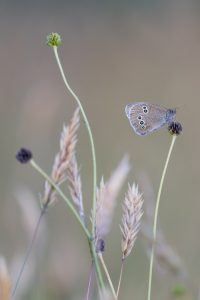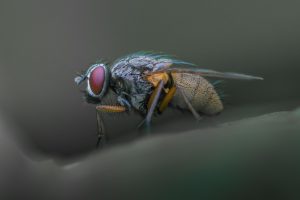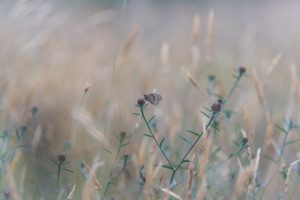Greatly inspired by macro photographers such as Naska Photographie(Flickr) and the charismatic Thomas Shahan(You Tube), I decided to explore macro in more depth this year. I sought a style of imagery that conveys the beauty of marshland meadows – a beauty largely hidden from view. It is not until you sit, be silent and observe without preconception – then new perspectives and the wonder of life beneath grass stalks is revealed.
A large, accessible meadow at the southern end of the East Coast Nature Reserve, Co Wicklow was chosen for it’s proximity to home and readily facilitated pre-dawn explorations. It took a number of visits to identify areas of interest with the meadow even though it appears broadly uniform at first glance. For example, one c.10 sq meter section was open to the rising sun, had taller grasses and thistles hosting dormant dragonflies at night. Another section was damp, hosted more rushes and wild flowers such as spearworts but offered colourful seedheads upon which butterflies alighted. Such were the types of variations I became familiar with and I would return to these places hoping for good light and attending insects.
My primary macro lens, the Nikkor 200mm f4 Micro was complemented with a Zeiss 135mm APO Sonnar, a TC 2.0/TC 1.4 with/without extension tubes, a Manfrotto Focus Rail and a standard reflector. I learned much about macro techniques, habitat exploration, ideal times for insect photography etc but more importantly I discovered a style of image I was searching for which the term “Dreamscapes” seemed apt.
Initially, I employed extension tubes to capture extreme close ups in the field. A windless day is required and bright but dispersed light. Even the slightest breeze is akin to a hurricane when viewing a stationary fly on a leaf – the subject may depart the viewfinder completely before bouncing back into view, legs still placed carefully on the same hairs of the plant.
With regard to camera settings, the usual ISO/Aperture/Shutter Speed conundrum is more challenging than usual. Even minimum f8-f11 apertures will not guarantee capture of a fully focused subject, especially towards the extreme range of macro.
Morning light in the thick of a meadow is rarely forthcoming and high shutter speeds are as relevant here as in general wildlife photography. This does depend on how close you are to the subject and the lens in use. Regularly, focus stacked exposures are required to ensure the subject is sharp from head to abdomen and across wings.
If focus stacking is employed remember to work quickly as movement (a fly moving a leg for instance) will effectively ruin the image. Focus stacking in the field is a great test of patience. For an easier life and depending on the composition, a flat on view is best so as to do without or reduce the number of stacks. Oh, and forget about auto focus – manual focus is macro de rigeur.
I discovered that standard focus rails such as the heavy Manfrotto complicates rather than simplifies in the field. Expect better performance with static subjects in a controlled environment. Focus breathing is not a substantive issue with the Nikon 200mm f4 and the focus ring is incomparable. As such, I left the focus rail at home more often than not.
Whilst it is fascinating to see exacting details of an insect and observe minute movements through camera live view, after experiencing the initial “wow” factor the resulting images did not appeal to me as much as I had anticipated. Through June and July, I found my self leaving the extension tubes at home and using the 200mm and occasionally a 135 mm lens – effectively moving further away from the subject. This opened up possibilities of allowing a largely out of focus meadow to dominate the image and intentionally reserving a small part of the frame for the subject, be it a butterfly or dragonfly – carefully placed for maximum impact. I played around with just how small the primary subject can be so that it remains identifiable as the single subject in the image. My interest was drawn more to seeing patterns, light and colour rather than capturing sharp images of a particular species.
Macro photography is much the same as other wildlife or landscape photography in that the best light occurs in the hours around sunrise and sunset. Insects have shiny exoskeletons that reflect light. As such, dispersed light is preferable. Insects are largely dormant in the hour before and after sunrise and settle into a dormant state at sunset. Sunrise offers the added advantage of dew soaked meadows. Additionally, the dew soaked wings of dragonflies are a true wonder of nature that I have rarely seen photographed and was surprised at how commonly I encountered them in this state. The trick is to carefully browse a relatively small area in the hour before sunrise rather than loosely wandering through the meadow hoping that something will catch the eye.
Although many of the images captured were satisfactory, I didn’t manage to find that special image yet. But now I know what it will look like! And so I’m looking forward with anticipation to the summer of 2019!
Please leave comments – questions or opinions below and I will respond as soon as is feasible.







I located your website from Google and I need to claim it was a fantastic locate.
Thanks!